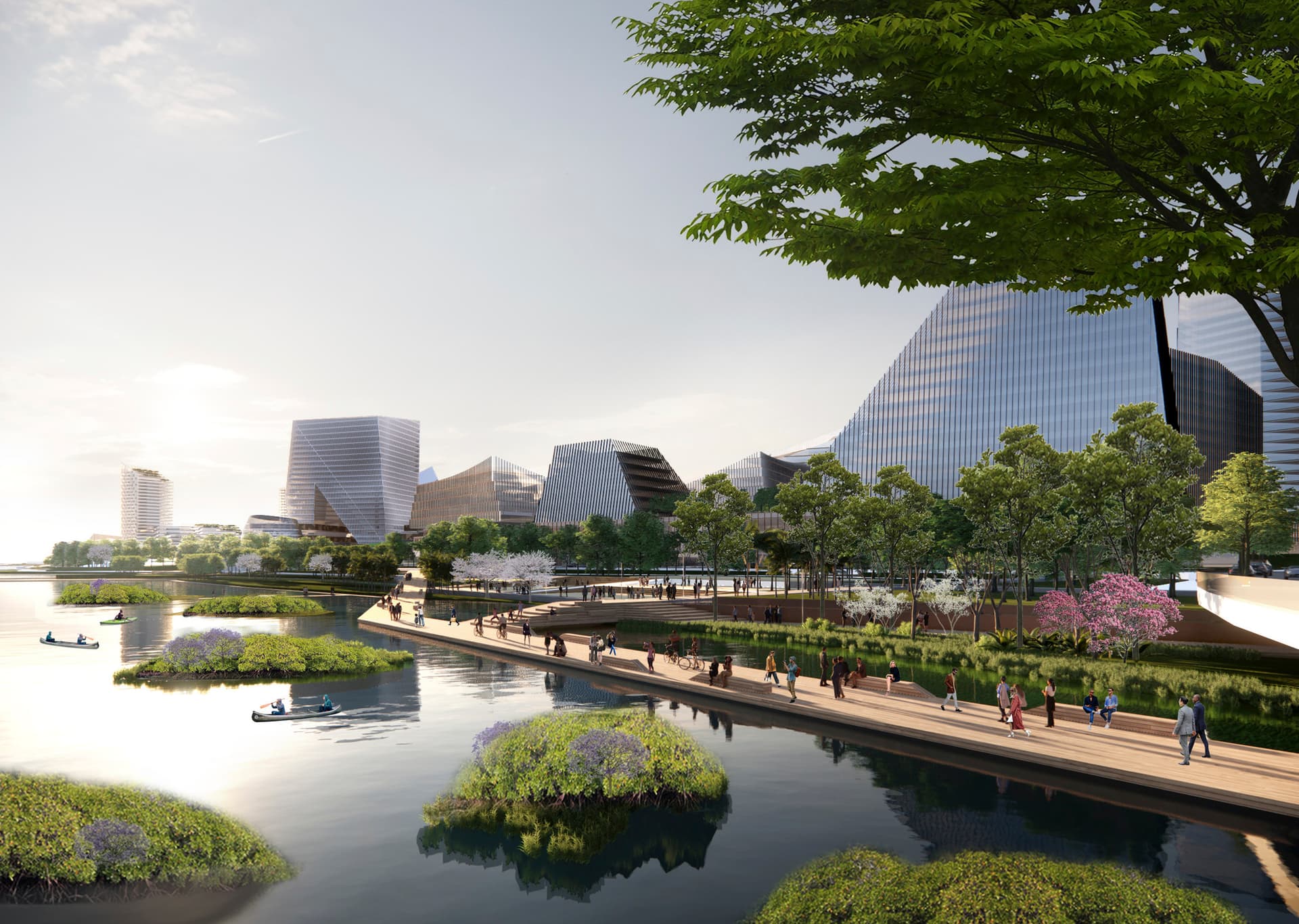Tencent Shenzhen Headquarters Project (Net City)
Throughout the world, modern cities operate from a mentality organized primarily around automobiles, not people. Tencent’s Shenzhen Headquarters Project (Net City) places the needs of people and the environment before cars, resulting in an interconnected, organic ecosystem that paves the way for future cities.
The design of the headquarters project prioritizes people and the environment at every step, from a comprehensive transportation network that emphasizes public transit, bicycles and pedestrian access to stormwater and runoff collection and public green spaces.
Features
The headquarters project features a new Tencent office, a residential neighborhood, schools, retail and other amenities to provide working and living conveniences for the community.
Project Details
Client Name
Tencent
Square Meters
2,000,000 SM
Program
Corporate offices, convention center, school, apartments, sports facilities, transit hubs, public eco parks and retail space
Services
Master planning, urban design, landscape design
Phase
Design
Client Name
Tencent
Square Meters
2,000,000 SM
Program
Corporate offices, convention center, school, apartments, sports facilities, transit hubs, public eco parks and retail space
Services
Master planning, urban design, landscape design
Phase
Design
China LDI Award, Shenzhen City-Level Excellence – Urban Design
MIPIM Asia, Best Futura Mega Project, Silver
China LDI Award, Shenzhen City-Level Excellence – Urban Design
MIPIM Asia, Best Futura Mega Project, Silver
CNN, “Tencent is Building a Monaco-sized 'City of the Future' in Shenzhen”
DesignBoom, “NBBJ Masterplans Enormous 'Net City' in Shenzhen for Internet Company Tencent”
Dezeen, “Giant Net City Car-Free Neighbourhood in Shenzhen will Cover Two Million Square Metres”
Fast Company, “This New Car Free District in Shenzhen is the Size of Midtown Manhattan”
The Wall Street Journal, “China’s Tencent Plays Master Builder as Tech Firm Plans ‘Net City’”
CNN, “Tencent is Building a Monaco-sized 'City of the Future' in Shenzhen”
DesignBoom, “NBBJ Masterplans Enormous 'Net City' in Shenzhen for Internet Company Tencent”
Dezeen, “Giant Net City Car-Free Neighbourhood in Shenzhen will Cover Two Million Square Metres”
Fast Company, “This New Car Free District in Shenzhen is the Size of Midtown Manhattan”
The Wall Street Journal, “China’s Tencent Plays Master Builder as Tech Firm Plans ‘Net City’”


